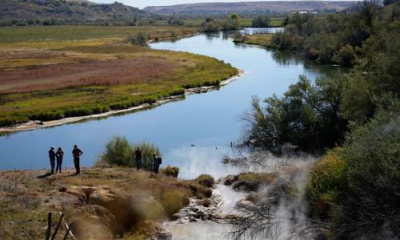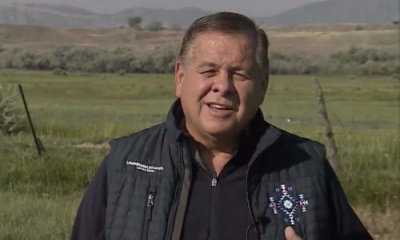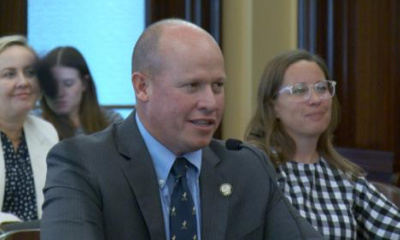The pipeline is for future water deliveries
A future pipeline for water deliveries to the growing Wasatch Front may be decades off, but the state of Utah is buying land now in Box Elder County to make sure it has a right of way for the infrastructure.
While the controversial Bear River Development Project has been pushed back to 2050 because of water conservation efforts, state officials say it does not mean the land necessary for a pipeline serving any new development project shouldn’t be acquired now.
“We’ve pushed back the need significantly,” said Candice Hasenyager, director of the Utah Division of Water Resources.
Hasenyager, speaking during a media briefing Wednesday, said the Utah Board of Water Resources appropriated $5 million to acquire land in the Willard to Brigham City areas for a future pipeline.
“We’re looking for willing sellers,” she said. “There is a tight corridor in which a large diameter pipeline would have to go through and so we are trying to get ahead of development so we are not disrupting communities later on. Really, that is the goal of this.”
She added that the state is nowhere close to expending the entire $5 million.
The briefing was hosted by Great Salt Lake Commissioner Brian Steed and the Great Salt Lake Strike Team to detail steps moving forward to conserve more water so it gets to the troubled lake, which reached a historic low last November.
While record snowpack this last season boosted levels in the south arm by more than five feet, both Steed and Hasenyager said water conservation is key moving forward.
The state-approved Bear River Development Project has long been controversial because it would siphon water from the lake’s largest tributary, the Bear River. Its ultimate goal is to make sure water supplies for the Wasatch Front are enough to meet population needs decades from now. Looking at U.S. Census Bureau numbers, Utah was the fastest-growing state in the country from 2010 through now, with a population growth rate of 23.88%, according to World Population Review.
None of the potential reservoir storage sites listed in the 1991 act authorizing the Bear River Development are feasible, so Hasenyager said there would have to be legislative changes to the measure moving forward on that key part of the development.
Project critics raised alarm due to the land purchases.
“I am disappointed that this is being considered at all,” said Ben Abbott, Grow the Flow’s executive director. “On the other hand, it appears that most of the legislature remains committed to protecting Great Salt Lake, and I hope they will take this off the table quickly and permanently.”
According to the state’s website on the project, it is expected to divert 220,000 acre-feet of water, but the Utah Division of Water Resources said most of that water would stay in the watershed via return flows. It estimates 85,600 acre-feet of water would be depleted from the system. An acre-foot of water is enough to cover an area the size of a football field by one foot.
Project critics remain skeptical.
“This project risks not only the state’s growing reputation for water conservation and environmental stewardship, but its ability to continue to grow and thrive,” said Jake Dreyfous, a program manager for Grow the Flow. “No one wants to live next to a giant dust bowl, and even if you don’t care about air quality, this project increases the likelihood of federal intervention to protect endangered species.”
The volume and area of the Great Salt Lake has shrunk by an estimated 50%, leaving exposed lakebed that contributes to Utah’s air pollution problem.
While it may be tempting to release some of Utah’s healthy reservoir storage to help cover that exposed lakebed now, Steed said it is a fine balancing act because no one has a crystal ball that will predict how much snowpack, hence water, the state will receive this year. That reservoir storage has to stay intact for culinary needs and agricultural demand until Mother Nature answers that question.
Steed said the northern Utah area is in the middle of prediction forecasts, meaning there are equal chances of what type of snow year will play out.
“What I have heard most recently is that we are expecting about average conditions and following last year that would actually be really good news because we have a much higher soil moisture content than last year.”
With fuller reservoirs, more of that water will make its way to the Great Salt Lake system, he added.
Hasenyager said the state remains committed to water conservation, with nearly a billion dollars directed to that effort, including secondary water metering, pushing water efficient landscapes to replace turf and working with land use planners to help areas “grow water wise.”
“How we grow matters and it sets our water use patterns for decades to come,” she said.
Steed said there will be a number of bills working their way through the coming legislative session and he is slated to deliver a report to Gov. Spencer Cox at the end of the month.
He added that addressing the water levels at the Great Salt Lake is a process that will take time, but steps necessary are either in play or on the board for future fixes, working within the constraints of water law.







